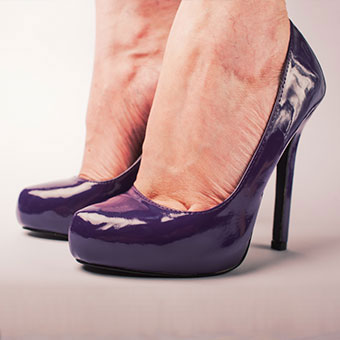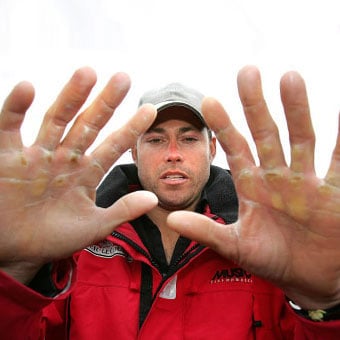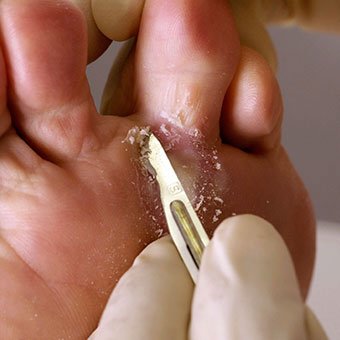Corns and Calluses
- Corns on Feet/Hands
- What Are
- What Causes
- Symptoms
- Diagnosis
- How to Get Rid of
- Doctor Specialists
- Prognosis
- How to Prevent

Corns and calluses facts
- Corns and calluses are annoying and sometimes painful skin conditions that consist of thickenings in the skin in areas of repeated pressure.
- Symptoms and signs of corns and calluses include
- Corns and calluses are foot problems that can be treated with many types of medicated products to chemically pare down the thickened, dead skin.
- Salicylic acid is the ingredient used in most corn and callus removal products.
- Corns and calluses can be prevented by reducing or eliminating the circumstances that lead to increased pressure at specific points on the hands and feet.
- People with fragile skin or poor circulation in the feet (including many people with conditions such as diabetes or peripheral arterial disease) should consult their health care professional as soon as corns or calluses develop.

What are corns and calluses?
Corns and calluses are annoying and potentially painful conditions that form thickened areas in the skin in areas of excessive pressure. The medical term for the thickened skin that forms corns and calluses is hyperkeratosis (plural=hyperkeratoses). A callus refers to a more diffuse, flattened area of thick skin, while a corn is a thick, localized area that usually has a popular, conical, or circular shape. Corns, also known as helomas or clavi, sometimes have a dry, waxy, or translucent appearance. A callus is also known as a tyloma.
Corns and calluses occur on parts of the feet and sometimes the fingers. Corns are often painful, even when they are small. Common locations for corns are
- on the bottom of the foot (sole or plantar surface), over the metatarsal arch (the "ball" of the foot);
- on the outside of the fifth (small or "pinky") toe, where it rubs against the shoe;
- between the fourth and fifth toes. Unlike other corns that are firm and flesh-colored, corns between the toes are often whitish and messy; this is sometimes called a "soft corn" (heloma molle), in contrast to the more common "hard corn" (heloma durum) found in other locations.

What causes corns and calluses to develop?
Hyperkeratosis simply means thickening of the skin. This thickening occurs as a natural defense mechanism that strengthens the skin in areas of friction or excessive pressure. Abnormal anatomy of the feet, including foot deformities such as hammertoe or other toe deformities, can lead to corn or callus formation, as can bony prominences in the feet. Footwear that is too short or too tight or that exerts friction at specific points is also a common cause of skin thickening that leads to corns and calluses. Abnormalities in gait or movement that result in increased pressure to specific areas can also be the cause.
It can be hard to know why finger corns develop since they often don't appear at sites of obvious pressure or rubbing. Finger calluses may develop in response to using tools, playing musical instruments such as the guitar, or using work equipment that exerts pressure at specific sites.

What are risk factors for corns and calluses?
As mentioned above, any condition or activity that results in increased friction over the fingers or toes can lead to the development of corns or calluses. People of all ages can be affected but they are particularly common in people over 65 years of age. Corns and calluses have been shown to affect 20%-65% of people in this age range. Some of these risk factors are
- abnormalities in the anatomy of the feet or toes;
- abnormalities in gait;
- bunions;
- poorly fitting shoes;
- using equipment, tools, or instruments that exert pressure on specific locations on the fingers; and
- certain occupations, such as farmers or garden workers.

What are symptoms and signs of corns and calluses?
Corns and calluses are
- hardened, thick areas of skin;
- rounded or conical and may appear as a bump on the skin;
- dry, scaly, or flaky; and
- painful, leading to foot pain if they interfere with walking or other activity. Calluses are typically painless.
How do health care professionals diagnose corns and calluses?
The diagnosis can be made by observing the characteristic changes in the skin. Specialized tests are not necessary.

What are treatments for corns and calluses? Are there home remedies for corns and calluses?
Corns and calluses can be treated with many types of medicated products to chemically pare down the thickened, dead skin. Many products are available for use as home remedies. These products all share the same active
Salicylic acid is keratolytic, which means it dissolves the protein (keratin) that makes up most of both the corn and the thick layer of dead skin which often tops it. Used as indicated on the package directions, these products are gentle and safe for most people. Salicylic-acid treatments are available in different forms including
- applicators,
- drops,
- pads,
- plasters.
All of these treatments will turn the top of the skin white and allow the dead tissue to be trimmed or peeled away, making the corn protrude and hurt less.
It generally is recommended that salicylic acid not be used by people with diabetes or when there is frail skin or poor circulation (because of concern about how the skin can heal). In these situations, the application of salicylic acid can potentially lead to ulcer formation on the skin. A health care professional can help determine whether salicylic acid-based products are safe for use on a particular individual.
Do not attempt to cut or shave away corns and calluses at home. This can lead to potentially dangerous infections of the surrounding tissues. This should be performed by a podiatrist or other health care professional.
A health care professional may also prescribe antibiotics for any corns or calluses that have become infected.
When should someone seek professional treatment for corns or calluses?
If the corn is bothersome and doesn't respond to salicylic acid and trimming, consider seeing a doctor or podiatrist who can physically pare corns with scalpels. Podiatrists also can measure and fit people with orthotic devices to redistribute their weight on their feet while they walk so that pressure from the foot bones doesn't focus on their corns. (Off-the-shelf cushioned insoles are one size fits all and may not be effective.)
People with fragile skin or poor circulation in the feet (including many people with conditions like diabetes or peripheral arterial disease) should consult their health care professional as soon as corns or calluses develop. Further, someone should seek medical care immediately if corns or calluses show signs of infection (such as increasing pain, the presence of pus or another drainage, swelling, and redness).
Surgical removal of corns is rarely necessary. When corn is surgically removed, the pressure that caused it to form in the first place will just make it come back if this pressure is not removed or reduced. When necessary, surgery for corns involves shaving the underlying bone or correcting any deformity that is causing undue pressure or friction on the skin.
What kind of doctor treats corns and calluses?
Primary-care specialists, including internal-medicine and family medicine specialists, treat corns and calluses. Podiatrists, medical practitioners specially trained in management of foot disorders, also treat corns and calluses of the feet. Surgeons may also sometimes treat corns and calluses.

What is the prognosis for corns and calluses?
Corns and calluses are not serious conditions and can be managed with home remedies or medical treatment. Surgery is very rarely necessary. However, even with management, corns and calluses may recur if there is continued pressure or friction on the affected area. Corns and calluses are benign conditions that do not increase the risk of skin cancer or other serious conditions.
Is it possible to prevent corns and calluses?
In many situations, calluses and corns can be prevented by reducing or eliminating the circumstances that lead to increased pressure at specific points on the hands and feet. Potential preventive measures therefore include the following:
- Wearing well-fitting comfortable shoes is useful. The idea is to avoid having footgear press on the outside of the fifth toe or pressing the fourth and fifth toes together to prevent corns in these areas.
- Another approach is to pad the potentially affected area. Many sorts of padding are available at the drugstore:
- Cushions to put between the toes
- Foam or moleskin pads to put over the places where corns form
- Foam pads with holes in the center (shaped like donuts or bagels), which redistribute pressure around the corn instead of right over it
- Cushioned insoles to pad the feet and alleviate mechanical pressure


